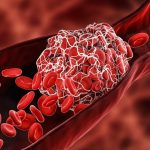The Four Stages of Cancer
Cancer is among the leading causes of death worldwide. By 2040, the National Cancer Institute expects 29.5 million new cases annually, resulting in 9.5 million cancer-related deaths. Identifying the four stages of cancer provides valuable information to the doctor and the patient. In addition to the physical burden, cancer has a social and emotional impact on patients and their families. Cancer staging can predict the outcome of the disease, which can help those with cancer better understand its impact on their lives.
How does cancer start?
Cancer is caused by abnormal cells that become cancerous. They grow and multiply and can travel to other parts of the body from where they originated. When genes mutate and create cancerous cells, they can create tumors in the body. The cells can metastasize, the medical term for cancer cells that break away from the original location and travel to other parts of the body.
Cancer cells grow much faster than normal cells, which is why early detection is critical in helping patients with cancer get treatment quickly and help them live longer. The most common type of cancer is breast cancer. Lung cancer is the second most common.
Why is cancer staging important?
Cancer staging systems are a way to describe the illness, show how far it has progressed and establish the likelihood of remission. Doctors can find the best treatment options based on a patient’s cancer stage. A cancer stage can also help determine if a patient is right for a clinical trial that may give them access to new drugs or therapies.
The four stages of cancer explain how much cancer is in the body and how far it has spread. A formal cancer stage assigned to a patient stays the same, even if the disease goes into remission or progresses. A healthcare provider will update the stage with applicable information as the cancer changes.
Staging is used in cancers with tumors that can spread, so it is not usually used for brain cancers and forms of blood cancers like leukemia.
How are stages identified?
The most widely used staging system is called tumor-node-metastasis (TNM). It is used to stage tumors found in breast, colon, lung, bladder and prostate cancers. This grading system can provide detailed information on the tumors, affected lymph nodes and if the cancerous cells have spread. Information from this classification system can help determine a patient’s cancer stage.
Tumor
The primary tumor is located and measured. The classification is numbered T0 to T4, with zero showing no cancer.
Nodes
The lymph nodes are checked to see if the tumor has spread. Cancer cells use the nodes to spread throughout the body. The nodes are classified from N0 to N3.
Metastasis
As mentioned above, when cancer has spread from its original location, it has metastasized. A classification of MI means cancer has spread to another place in the body.
What are the four stages of cancer?
The most widely recognized classification is a simple system to describe cancer called staging. Physicians and oncologists refer to these stages so that patients understand the characteristics of their cancer.
The following four stages of cancer are classified when cells have become cancerous. Classification of cancer also includes the patient’s age, the tumor’s location and other health issues that may influence treatment options.
Some doctors include a fifth stage in which abnormal cells are present but have not developed into cancer. This is considered stage 0.
Stage I
Early-stage cancer has smaller tumors or abnormal cells that have not spread to lymph nodes or other areas of the body.
Stage II
Cancer with tumors that have grown or are deeper in the tissue but have not moved to other areas or lymph nodes.
Stage III
Cancer with tumors that have grown deeply into nearby tissue and have spread to lymph nodes but have not moved to distant areas of the body.
Stage IV
Advanced cancer with tumors that have spread beyond the original area and into the lymph nodes and other organs. This stage of cancer is considered metastatic.
What tests are used to stage cancer?
The clinical stage of cancer is determined through multiple tests, including a physical exam, blood tests and imaging scans like X-rays, CT scans and MRIs. The types of tests used depend on where the cancerous cells or tumors are located and if they have moved to other areas of the body.
Once imaging is performed to locate potential abnormal cells, a biopsy is performed to see if the cells are cancerous. Tissue from the tumor is removed from the body and examined in a lab by a pathologist to see if the cells are cancerous.
Depending on the location of the tumor or cells, a biopsy can be done in several ways, including a needle biopsy for places just underneath the skin, like lymph nodes or the breasts. An endoscopic biopsy is done to view organs inside the body. A skin biopsy is used for skin cancers like melanoma.
In cases of leukemia, a biopsy must be taken from the bone marrow. This biopsy can also determine some forms of other blood cancers.
A surgical biopsy is recommended if the abnormal cells or tissues cannot be accessed through any of the procedures above.
How is cancer treated?
Cancer treatment varies based on the cancer stage, type of cancer and the patient’s overall health. The goal of any cancer treatment is to shrink the cancerous cells and slow the progress of cancer so that the patient can live symptom-free.
Advancements have been made in cancer treatment because of new drugs, robotic surgeries and radiation techniques. At Personalized Hematology-Oncology, we use tumor gene expression profiling to determine how genes affect how each patient responds to medications. With this, we can better plan customized cancer care with the potential to offer the right drug at the right time to the right patient.
Here are a few of our other treatment options:
- Genome science
- Gene testing
- Vaccine therapy/oral chemotherapy
- Infusion therapy
- Molecular diagnostics
- Proton beam therapy
- Robotic surgery
- Late-stage treatment
- Outpatient/minimally invasive options
Early cancer detection in the Triangle
Early detection is key in treating cancer. Follow your physician’s recommendations for cancer screening tests. Screening is important even for people with no symptoms, especially if you have other health conditions or your family has a history of cancer.
You can reduce your risk by making lifestyle changes that lower your chances of developing cancer. If you want to talk to a doctor about your risks, contact us to make an appointment with our primary care provider.





